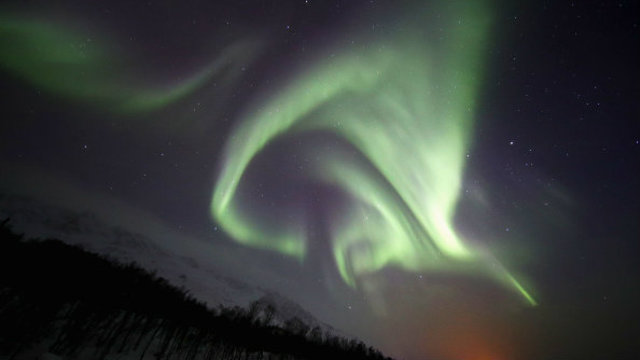This week, the British Geological Survey (BGS) released a “Geomagnetic Disturbance Alert,” indicating that it is a good opportunity for avid night sky-watchers to capture a spectacular view of the starry sky. After researchers discovered solar flares, the Northern Lights are anticipated to be detectable in northern regions of the UK this week. On the evenings of March 31 and April 1, the Aurora Borealis will be seen as far south as Scotland, areas of Northern England, the Midlands, and Northern Ireland. Following a supernova explosion and a mass expulsion, experts are predicting a solar flare that will force the magnificent lights southward towards the equator.
Because of light contamination from neighboring metropolitan areas, it will be difficult to see the aurora. “It’s challenging for the vision to perceive the colors and discriminate between city lights when the aurora is quite dim,” says Don Hampton, a scientist at the University of Alaska, Fairbanks. You would like to be a couple of miles outside of town. Look to the north with fewer lights if you can be on a farmer’s field or anything else.”

Furthermore, he also indicates that the storm may be greater than projected and that it may be followed by further auroras since the hotspot that launched the CME towards Earth has erupted 17 times since then. As a consequence, at least two additional CMEs are on their way to Earth, perhaps causing auroras on April 1, 2022. It occurs at an opportune moment since auroras, which are caused by the combination of space weather and Earth’s magnetic fields, are believed to be brighter around the equinoxes. At the equinoxes, the North and South Poles of Earth point perpendicular to the axis of the Sun and its magnetic field, allowing solar wind to speed more effectively through the field lines of the geomagnetic field.

The solar storm and accompanying events are linked to the sun’s ongoing sympathetic stimulation as part of the solar cycle 25. The sun’s intensity varies on an 11-year cycle, and it has been at its lowest level in recent years. Scientists estimate that sunspot activity will peak in 2025 and that sunspots, CMEs, and solar storms will become more common in the next years.


